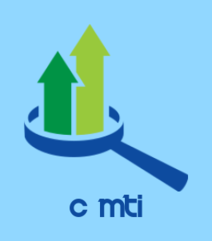Table of Contents
- Introduction
- History of Language in Denmark
- What Language is Spoken in Denmark Today?
- Who Speaks Danish?
- What Are the Benefits of Learning Danish?
- Conclusion
Introduction
Denmark is a country located in Northern Europe, bordering Germany, Sweden, and Norway. It is known for its picturesque landscape, rich cultural heritage, and vibrant cities. But what language is spoken in Denmark?
Denmark has a long and diverse history, and this is reflected in the languages spoken there today. Danish is the official language of the country, and it is spoken by the majority of the population. However, there are also several minority languages spoken in Denmark, including German, Faroese, and Greenlandic.
In this blog post, we will explore the history of language in Denmark, what language is spoken in Denmark today, who speaks Danish, and the benefits of learning the language. Keep reading to find out more!
History of Language in Denmark
The official language of Denmark is Danish, which belongs to the North Germanic branch of the Indo-European language family. It is closely related to Swedish and Norwegian, and these three languages are often referred to as the ‘Scandinavian languages’.
Danish has been spoken in Denmark since the 8th century, when it was brought to the country by the Vikings. Over time, the language evolved and eventually became the official language of Denmark.
In the past, Danish was heavily influenced by Low German, which is still spoken in some areas of the country. Danish was also influenced by French during the period of Danish colonization. Today, Danish is spoken by the majority of the population, and it is the official language of the country.
What Language is Spoken in Denmark Today?
The official language of Denmark is Danish, which is spoken by the majority of the population. It is a North Germanic language, related to Swedish and Norwegian.
In addition to Danish, there are several minority languages spoken in Denmark, including German, Faroese, and Greenlandic. German is the most widely spoken minority language, followed by Faroese and Greenlandic. These languages are spoken by small communities in Denmark, and they are officially recognized by the government.
English is also spoken by a large percentage of the population, as it is taught in schools from a young age. English is widely used in business and tourism, and it is the language of many international companies based in Denmark.
Who Speaks Danish?
Danish is spoken by the majority of the population of Denmark, and it is the official language of the country. It is spoken by all age groups, from children to the elderly. Most Danish people also speak English, and many are also fluent in German and other languages.
Danish is also spoken by some communities in Germany, the Faroe Islands, Greenland, and the United States. It is also spoken by some immigrants in Denmark, as well as by people who have moved to Denmark from other countries.
What Are the Benefits of Learning Danish?
Learning Danish can be very beneficial for anyone looking to study, work, or travel in Denmark. It will allow you to communicate with the locals and better understand their culture and customs. It will also give you a better understanding of Danish literature and art. Furthermore, speaking Danish can open up a range of new job opportunities in Denmark.
Learning Danish is also beneficial for anyone looking to expand their knowledge of languages. It is a North Germanic language, and it is closely related to Swedish and Norwegian, so learning Danish can help you learn these other languages as well.
Conclusion
Denmark is a beautiful country with a rich cultural heritage. The official language of Denmark is Danish, which is spoken by the majority of the population. There are also several minority languages spoken in Denmark, including German, Faroese, and Greenlandic. English is also widely spoken by the population, as it is taught in schools from a young age.
Learning Danish can be very beneficial for anyone looking to study, work, or travel in Denmark. It will allow you to communicate with the locals, understand their culture and customs, and open up a range of new job opportunities. Learning Danish can also help you learn other North Germanic languages, such as Swedish and Norwegian.
We hope this blog post has given you a better understanding of the language spoken in Denmark. Thanks for reading!

